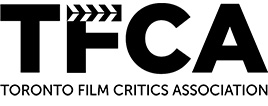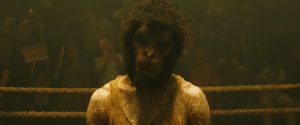Reviews include Irena’s Vow, The Beast, and Before I Change My Mind.
Auteurs de Force: Sam Peckinpah and Michael Cimino at Locarno 68
August 17, 2015
by Adam Nayman

Two American alpha males, one dead and the other evidently alive and well after all these years, presided over this year’s Festival del Locarno: Sam Peckinpah and Michael Cimino. Locarno is a festival that privileges young cinema, but not at the expense of old masters, and while it could be argued that this year’s director retrospectives cover a too-similar swath of cinematic territory – the paths of glory of the New Hollywood – there’s also something appropriate about honoring two filmmakers whose fame was bound up in a sense of self-destruction – and whose reputations could use some renovation in the present tense.
There is perhaps less at stake in the case of Sam Peckinpah, and not only because he passed away in 1984. Whatever the trials and tribulations of his professional career, the man who signed The Wild Bunch (1969) is always going to have his place in film history. In an essay in the festival’s guide-book, Robert Turigliatto suggests that even though Peckinpah’s filmmaking spanned four decades (including some influential early television work) he was a figure who slipped through the cracks of industry trends and cycles; he arrived on the scene too late to be John Ford and too soon to be Quentin Tarantino (whose filmographies his work reflects and anticipates, respectively).

The conventional wisdom is that Peckinpah favored stories of down-and-out loners because they mirrored his own hard-living ethos, and that he made his villains more powerful than his heroes because he saw these ancient inequalities reproduced and multiplied in an industry where producers carried themselves like gangsters and cattle barons. With this in mind, 1974’s Bring Me the Head of Alfredo Garcia seems like Peckinpah’s definitive statement, produced as it was in Mexico in defiance of Hollywood protocol (the various technical unions threatened to boycott it on release as a “runaway production”). Its tale of a lone ex-army serviceman-turned mercenary trying to cash in on the corpse of a dead Mexican man – and eventually bent on taking down the bad guys offering the bounty– was the stuff of exploitation movies except that in Peckinpah’s hands, the morbid storyline felt severe and surreal – closer to Bunuel than the cheapjack thrillers of the 1970s.
Bring Me the Head of Alfredo Garcia is indelible not only because of its amazing central visual metaphor – a moldering skull right out of Shakespeare that becomes a sounding board for poor, death-wishing Warren Oates – but because Peckinpah writes his personal philosophy into the space between the shoot-out. A throwaway line early on, when one of the villains introduces himself as “Fred C. Dobbs,” invokes The Treasure of the Sierra Madre, a film that helped to codify the notion that money is the root of all evil. Here, the hero isn’t punished for his greed because he doesn’t take the money in the first place – the kind of payback he wants is free.
There’s a different sort of revenge percolating under the surface of Michael Cimino’s Year of the Dragon (1985) which screened to a gigantic late-night audience in Locarno with the director in attendance. Cimino’s glee at being introduced as a titan was evident, especially since his legend is much rustier than Peckinpah’s; in film-historical terms, Heaven’s Gate (1980) was the equivalent of the end of The Wild Bunch, with the director getting cut down in a hail of bullets fired by critics and cultural commentators appalled by auteurism-out-of-control. Leaving aside the question of whether Heaven’s Gate is actually a misunderstood masterpiece – and if its status as the most famous flop of all time is actually an indictment of audiences whose attention spans had been shortened by the coronation of Star Wars (1977) as a more acceptably escapist epic – it seems clear from Cimino’s reception in Locarno that for many cinephiles on the ground, all is forgiven.

Which is not to say that Year of the Dragon is easily forgivable. Produced in the wake of Heaven’s Gate, it’s one of the most unrepentantly racist and sexist American studio movies of the era, if not of all time. Mickey Rourke stars as a Polish NYPD captain so determined to bring down the Chinese Triads pumping drugs and bullets through the city’s arteries that he’s borderline-sociopathic: at times, he makes Harry Callahan look like a by-the-book rookie. The subtext is that Rourke’s Jimmy is a Vietnam vet, which personalizes his crusade against the Asian gangsters, but also positions the film as a spiritual sequel to Cimino’s 1978 Oscar winner The Deer Hunter. In that film, Cimino dramatized the anguish of American men sent overseas to fight and returned home as empty shells; in Year of the Dragon, we see a man who still wears the residue of that experience.
But there’s another way to read Year of the Dragon, and that’s as a self-portrait of the artist. Cimino wrote the script with Oliver Stone, and it’s about as hysterical as that pairing would suggest: it’s melodramatically plotted, with weak female characters and a philosophy of righteous violence that shades into borderline fascist-fantasy territory (the ending is like a replay of Dirty Harry on a bigger scale). And yet it’s still compelling because Jimmy’s refusal to listen to what anybody is telling him – not his wife, not his girlfriend, and certainly not his police superiors – makes him into an analogue for Cimino, or maybe the idea of Michael Cimino after Heaven’s Gate. Even though a lot of the easy-rider/raging bull directors of the era had big, public flops, Cimino is the one who came to stand in for the idea of the auteur-out-of-control; Steven Bach’s book Final Cut comprehensively details his tantrums and ultimatums against United Artists from the set of Heaven’s Gate. Cimino wouldn’t compromise, and as a result, he became a scapegoat for the collapse of the “personal” American cinema of the 1970s: if not for the firestorm of bad publicity and worse vibes around Heaven’s Gate, the argument goes, we might still be living in a golden age.
This is of course ridiculously oversimplified, and Heaven’s Gate is no more to blame for the state of American filmmaking than Ishtar or Showgirls or other cursed blockbusters. What’s fascinating about Year of the Dragon is how it shows Cimino trying to move on from the debacle by working within a baldly commercial format – the big-city cop movie – and yet failing to sublimate his bombastic, art-film tendencies; the film’s visual spaces are so massive and busy with activity that you could be mistaken for thinking you were watching a Visconti homage instead of a terse urban thriller. Cimino’s gigantism blows the story all out of proportion, and yet that inflation is also thrilling, never more so than in a shootout in a Chinese restaurant that might be a raid on a James Bond villain’s fortress. A friend remarked to me after the screening that Year of the Dragon was the sort of movie “they don’t make anymore,” and while that surely refers to its political incorrectness – Jimmy hurls slurs with impunity and the Asian characters are a gallery of stereotypes from villains to victims – it’s also amazing how a movie that’s only just thirty years old can feel like a throwback to an entirely different species of mainstream moviemaking.
Both Bring Me the Head of Alfredo Garcia and Year of the Dragon were sold as crowd-pleasers in Locarno, and both commanded big audiences whose members seemed at least momentarily relieved to be engaging with big-scale entertainments in between screenings of new art films. The irony is that neither film was a hit upon their release, and neither director was ever much good at the business of pleasing people – including themselves. Cimino is getting his moment in the Swiss spotlight right now, and his loquacious press conferences and question-and-answer periods suggest a man who’s made peace with his past without conceding to obsolescence. His films, for all their flaws – and maybe to some extent because of them – hold up. As for Peckinpah, he’s hardly an ignored or marginalized figure, which makes the exquisite self-pity of Bring Me the Head of Alfredo Garcia all the more resonant. In the film’s last image, Peckinpah freezes on a machine gun as it’s about to fire and then superimposes his own director’s credit. It’s a “last shot” that affirms its maker’s cinematic firepower while also suggesting that even at the height of his powers, he felt like he was working under the gun.



